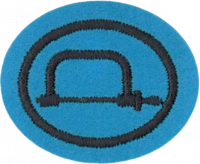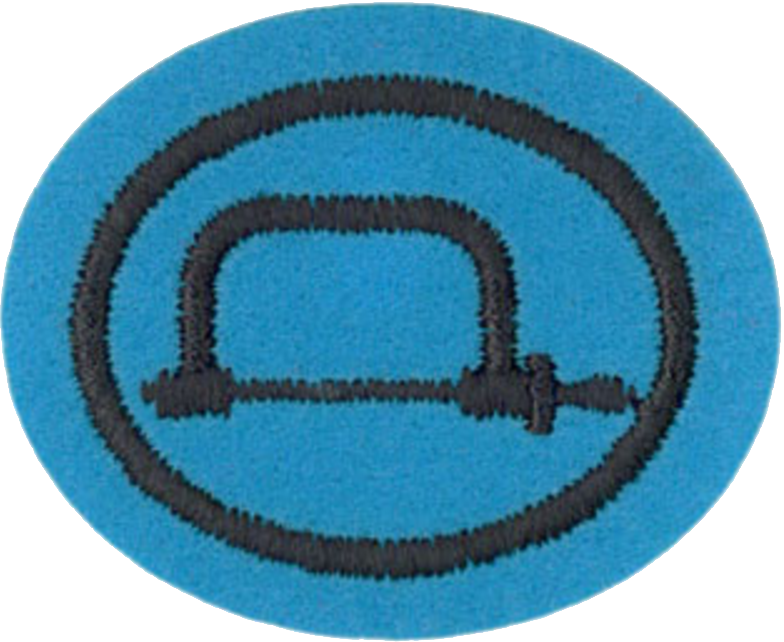|
|
| Line 7: |
Line 7: |
| | {{clear}} | | {{clear}} |
| | | | |
| − | <div lang="en" dir="ltr" class="mw-content-ltr">
| + | {{clear}} |
| − | ===Pine===
| |
| − | [[Image:Kiefer Holz.JPG|thumb|250px|Pine]]
| |
| − | Pines is among the most commercially important genus of tree, valued for its timber and wood pulp throughout the world. Pine wood is widely used in high-value carpentry items such as furniture, window frames, paneling and floors. Pine is readily available at commercial lumberyards, being among the least expensive forms of lumber. Pine is light yellow to white with a reddish tinge. It darkens to an orange tint with age. The wood is soft and easily shaped with both hand and power tools, making it a very popular choice for wood craft.
| |
| − | <br style="clear:both">
| |
| − | ===Walnut===
| |
| − | [[Image:Nussbaum Holz.JPG|thumb|250px|Walnut]]
| |
| − | The Persian Walnut, and the Black Walnut and its allies, are important for their attractive timber, which is hard, dense, tight-grained and polishes to a very smooth finish. The colour ranges from creamy white in the sapwood to a dark chocolate colour in the heartwood. When kiln-dried, walnut wood tends toward a dull brown colour, but when air-dried can become a rich purplish-brown. Because of its colour, hardness and grain it is a prized furniture and carving wood. Walnut burls (or 'burrs' in Europe) are commonly used to create bowls and other turned pieces. Veneer sliced from walnut burl is one of the most valuable and highly prized by cabinet makers and prestige car manufacturers.
| |
| − | </div>
| |
| | | | |
| | <div class="mw-translate-fuzzy"> | | <div class="mw-translate-fuzzy"> |
| Line 21: |
Line 13: |
| | </div> | | </div> |
| | | | |
| − | <div lang="en" dir="ltr" class="mw-content-ltr">
| + | {{clear}} |
| − | ===Oak===
| |
| − | [[Image:Traubeneiche.JPG|thumb|250px|Oak]]
| |
| − | Oak has very attractive grain markings, particularly when quarter-sawn. Wide, quarter-sawn boards of oak have been prized since the Middle Ages for use in interior paneling of prestigious buildings such as the debating chamber of the British House of Commons in London, England, and in the construction of fine furniture. Today oakwood is still commonly used for furniture making and flooring, timber frame buildings, and for veneer production.
| |
| − | </div>
| |
| | | | |
| − | <div lang="en" dir="ltr" class="mw-content-ltr">
| + | {{clear}} |
| − | Oak is a very hard, strong, and durable wood. It is not easily worked when cured, and is thus not a good choice for the beginning wood crafter. However, in the hands of a skilled craftsman, it is an excellent choice, holding carving detail well over very long periods of time.
| |
| − | <br style="clear:both">
| |
| − | </div>
| |
| | | | |
| − | <div lang="en" dir="ltr" class="mw-content-ltr">
| + | {{clear}} |
| − | ===Cedar===
| |
| − | The fine-grained, soft brittle pinkish- to brownish-red heartwood is fragrant, very light and very durable, even in contact with soil. Because of its rot resistance the wood is used for fence posts. Because the aromatic wood is avoided by moths it is in demand as lining for clothes chests and closets, often referred to as cedar closets and cedar chests. It was once a premier wood for pencils.
| |
| − | </div>
| |
| | | | |
| − | <div lang="en" dir="ltr" class="mw-content-ltr">
| + | {{clear}} |
| − | Cedar is available at some lumberyards, but is often located in a section of the store reserved for outfitting closets. It is more expensive than pine, but not out of reach of the budget-conscious Pathfinder. Its aroma alone make it well worth the added expense compared to pine, and it works just as easily. It is an excellent choice for the beginner.
| |
| − | <br style="clear:both">
| |
| − | </div>
| |
| | | | |
| − | <div lang="en" dir="ltr" class="mw-content-ltr">
| + | {{clear}} |
| − | ===Maple===
| |
| − | [[Image:Ahorn-Maser Holz.JPG|thumb|250px|left|Maple with Birdseye Figure]]
| |
| − | [[Image:Ahorn Holz.JPG|thumb|250px|right|Maple with straight grain]]
| |
| − | Some of the larger maple species have valuable timber, particularly Sugar Maple in North America, and Sycamore Maple in Europe. Sugar Maple wood, often known as "hard maple", is the wood of choice for bowling pins, bowling alley lanes, pool cue shafts, drums, and butcher's blocks. Maple wood is also used for the production of wooden baseball bats, though less often than ash or hickory.
| |
| − | </div>
| |
| | | | |
| − | <div lang="en" dir="ltr" class="mw-content-ltr">
| + | {{clear}} |
| − | Some maple wood has a highly decorative wood grain, known as flame maple and quilt maple. This condition occurs randomly in individual trees of several species, and often cannot be detected until the wood has been sawn, though it is sometimes visible in the standing tree as a rippled pattern in the bark.
| |
| − | </div>
| |
| | | | |
| − | <div lang="en" dir="ltr" class="mw-content-ltr">
| + | {{clear}} |
| − | Maple is a very hard wood, and while that makes it difficult to work with hand tools, it also makes it a very good choice when fine carving details are desired. Because of its working difficulty, it is a wood better left to the experienced craftsman rather than the beginner.
| |
| − | <br style="clear:both">
| |
| − | </div>
| |
| | | | |
| | <div class="mw-translate-fuzzy"> | | <div class="mw-translate-fuzzy"> |
| Line 133: |
Line 102: |
| | <!-- 7. Cortar y terminar una estaca de jardín o marcador de césped, mediante un diseño como un niño, pájaro, flor o árbol. --> | | <!-- 7. Cortar y terminar una estaca de jardín o marcador de césped, mediante un diseño como un niño, pájaro, flor o árbol. --> |
| | | | |
| − | <div lang="en" dir="ltr" class="mw-content-ltr">
| + | {{clear}} |
| − | Take your 1/4 inch plywood and draw (or trace with carbon paper) the design that you wish to use for this project. When you are finished drawing, take a coping saw and cut out your design. If you find that the plywood is tearing out excessively, put the coping saw away and get out a carton knife (or use a hooked blade on a pocket knife). Slice a V-groove around where the saw will cut. This cut should go straight down (90°) along the line, and angle in from the waste side. Next closely examine the teeth of the coping saw, and re-install the blade so that it cuts on the pull stroke rather than on the push stroke. You may notice that a saw always rips out on the side of the board that the cutting stroke exits. By using a knife to cut out around the line, there is nothing to tear out, but this only works if the blade cuts on the pull stroke.
| |
| − | </div>
| |
| | | | |
| − | <div lang="en" dir="ltr" class="mw-content-ltr">
| + | {{clear}} |
| − | Then, sand the edges gently to remove the excess wood particles that make the design rough and unfinished. Next, take your 1/2 inch block of wood and cut it to about 18 inches in length and cut one end to a point (it is best to make a 45 degree cut from both sides of the stake). Now, attach your design to the stake using wood glue, finishing nails, or wood screws.
| |
| − | * Note: If you are making the entire project from the 1/4 inch plywood, the stake extends from the bottom of the design anywhere from 12-18 inches. Do not cut the stake out separately, but cut down beyond the design to make the stake.
| |
| − | Finally, you may decorate your project with paint, if you wish. It would be best to put a water sealant on your project before placing it outside so that rain will not ruin it.
| |
| − | </div>
| |
| | | | |
| | <noinclude></noinclude> | | <noinclude></noinclude> |
| Line 157: |
Line 120: |
| | {{clear}} | | {{clear}} |
| | | | |
| − | <div lang="en" dir="ltr" class="mw-content-ltr">
| + | La División Sudamericana tiene una especialidad llamada [[AY Honors/Pyrography|Pirograbado]] que trata específicamente sobre la quema de madera. Sin embargo, tenga en cuenta que la insignia de parche no será fácil de obtener para alguien que vivie fuera de esa división. |
| − | The South American Division has developed an honor called [[AY Honors/Pyrography|Pyrography]] which is specifically about wood burning. Keep in mind, however, the patch token will not be easy to attain for anyone outside of that division.
| |
| − | </div>
| |
| | | | |
| − | <div lang="en" dir="ltr" class="mw-content-ltr">
| + | <noinclude></noinclude> |
| − | <noinclude> | |
| − | </div></noinclude>
| |
| | {{CloseReq}} <!-- 8 --> | | {{CloseReq}} <!-- 8 --> |
| − | <noinclude><div lang="en" dir="ltr" class="mw-content-ltr"> | + | <noinclude></noinclude> |
| − | </noinclude> | + | ==Referencias== |
| − | ==References== | + | [[Category:Adventist Youth Honors Answer Book/es]] |
| − | [[Category:Adventist Youth Honors Answer Book|{{SUBPAGENAME}}]] | + | <noinclude></noinclude> |
| − | <noinclude> | |
| − | </div></noinclude>
| |
| | {{CloseHonorPage}} | | {{CloseHonorPage}} |


